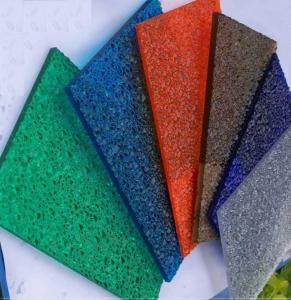Welcome to the world of DIY plumbing solutions, where we explore the practicality and versatility of plastic plumbing pipes and fittings. Whether you’re a homeowner looking to save on plumbing costs or a handyman eager to expand your skillset, this article is for you. We’ll dive into the advantages of using plastic pipes, the different types available, and some tips for successful installation. So, grab your tools and let’s get started!
The Appeal of Plastic Pipes
Plastic plumbing pipes have gained popularity over the years for several reasons. They are lightweight, easy to handle, and require less effort to install compared to traditional metal pipes. The flexibility of plastic pipes makes them ideal for navigating around corners and through tight spaces. Plus, they are resistant to corrosion and rust, ensuring a longer lifespan.
Different Types of Plastic Pipes
1. PVC Pipes: Known for their durability and resistance to chemicals, PVC pipes are a popular choice for both residential and commercial plumbing systems. They are easy to cut and join, making them a favorite among DIY enthusiasts.
2. PEX Pipes: Cross-linked polyethylene (PEX) pipes are praised for their flexibility and kink resistance. They are perfect for radiant heating systems and can be used in both hot and cold water applications.
3. CPVC Pipes: Chlorinated polyvinyl chloride (CPVC) pipes offer high heat resistance and are often used for hot water supply systems. They are more rigid than PVC pipes but still offer the benefits of being lightweight and corrosion-resistant.
4. ABS Pipes: Acrylonitrile-butadiene-styrene (ABS) pipes are known for their strength and resistance to impact. They are commonly used in drain, waste, and vent (DWV) systems.
Choosing the Right Fittings
Selecting the appropriate fittings is crucial for a successful plumbing project. Here are some common types of plastic plumbing fittings you might come across:
– Elbows: Used to make 90-degree turns in the pipe.
– Tees: Allow you to branch off from the main pipe line.
– Couplings: Used to connect two pieces of the same pipe.
– Unions: Similar to couplings but can be disassembled for easy maintenance.
– Adapters: Necessary for connecting pipes of different materials or sizes.
Installation Tips
1. Measure Twice, Cut Once: Always double-check your measurements before cutting the pipe to avoid wasting materials.
2. Use the Right Tools: Invest in a good pipe cutter and a pipe bender for precise cuts and bends.
3. Check for Leaks: After installation, test your system for leaks to ensure everything is sealed properly.
4. Follow Local Regulations: Make sure to adhere to local plumbing codes and regulations to avoid any issues down the line.
The DIY Mindset
Embracing a DIY mindset when it comes to plumbing can save you money and provide a sense of accomplishment. It’s not just about the end result but also the journey of learning and problem-solving. Remember, every plumber was once a beginner, and every project is an opportunity to grow.
In Conclusion
Plastic plumbing pipes and fittings offer a modern, efficient, and cost-effective solution for your plumbing needs. By understanding the different types of pipes, selecting the right fittings, and following proper installation techniques, you can successfully tackle a variety of plumbing projects. So, what are you waiting for? Let’s get plumbing!

